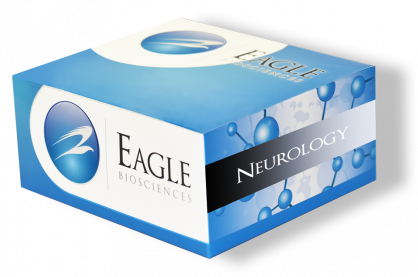Phosphorylated NF-H ELISA Assay
The Phosphorylated NF-H ELISA Assay is For Research Use Only
Size: 1×96 wells
Dynamic Range: 0.156-10 ng/ml
Incubation Time: 3 hours
Sample Type: Serum, Plasma, CSF, and Tissue Extracts
Sample Size: 50 µL
Alternative Names: pNF-H ELISA, Human Phosphorylated Neurofilament H
Assay Background
Neurofilaments are type IV intermediate filament heteropolymers composed of light, medium, and heavy chains. Neurofilaments comprise the axoskeleton and functionally maintain neuronal caliber. They may also play a role in intracellular transport to axons and dendrites. This gene encodes the heavy neurofilament protein. This protein is commonly used as a biomarker of neuronal damage and susceptibility to amyotrophic lateral sclerosis (ALS) has been associated with mutations in this gene. [provided by RefSeq, Oct 2008] The pNF-H protein has been detected in large amounts following experimental spinal cord and brain injury in rats (18). Levels of greater than 100ng/mL of pNF-H were detectable in blood samples following serious spinal cord injury and lower but still easily detectable levels were seen in blood of animals given experimental brain injury.
More recent studies have revealed considerable amounts of this protein in the blood of transgenic mice carrying mutations of human copper/zinc superoxide dismutase-1 which are associated with amyotrophic lateral sclerosis. These mice develop an axonal degeneration pathology similar to that seen in humans with ALS, and blood pNF-H levels can be used to monitor progression of the disease. Interestingly, pNF-H was detectable before the onset of obvious disease symptoms.
Related Products
Brain-Derived Neurotrophic Factor (BDNF) ELISA Assay Kit
HMGB1 ELISA Assay Kit (Plasma)
Neuropeptide Y ELISA Assay


